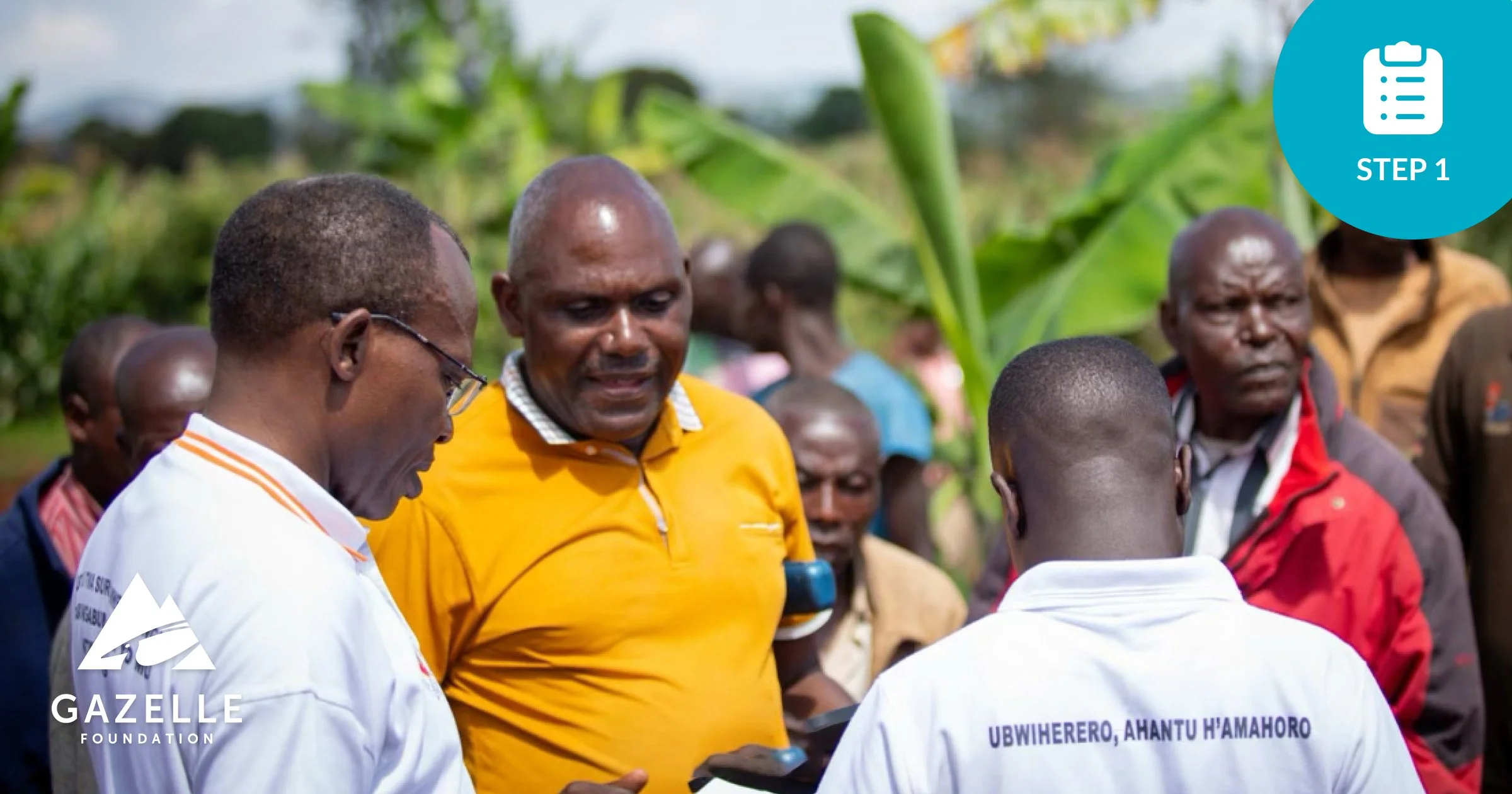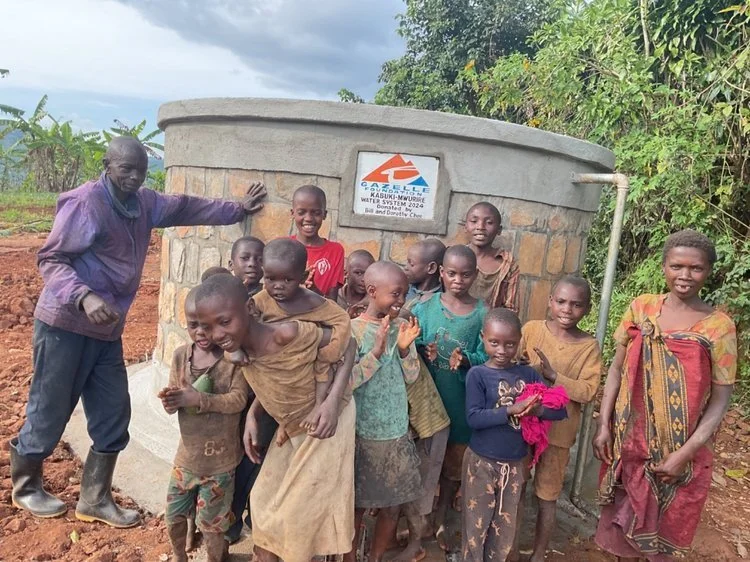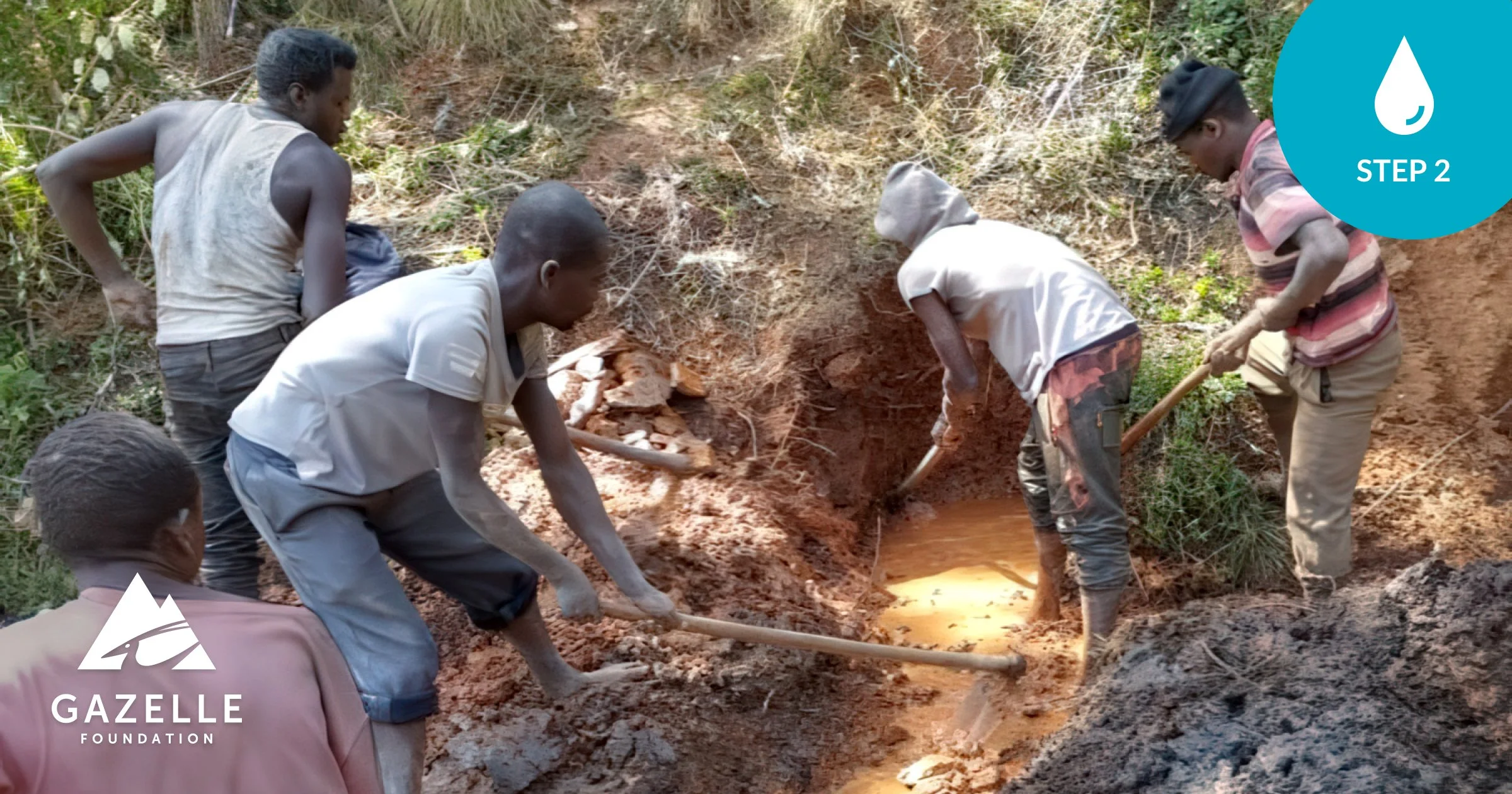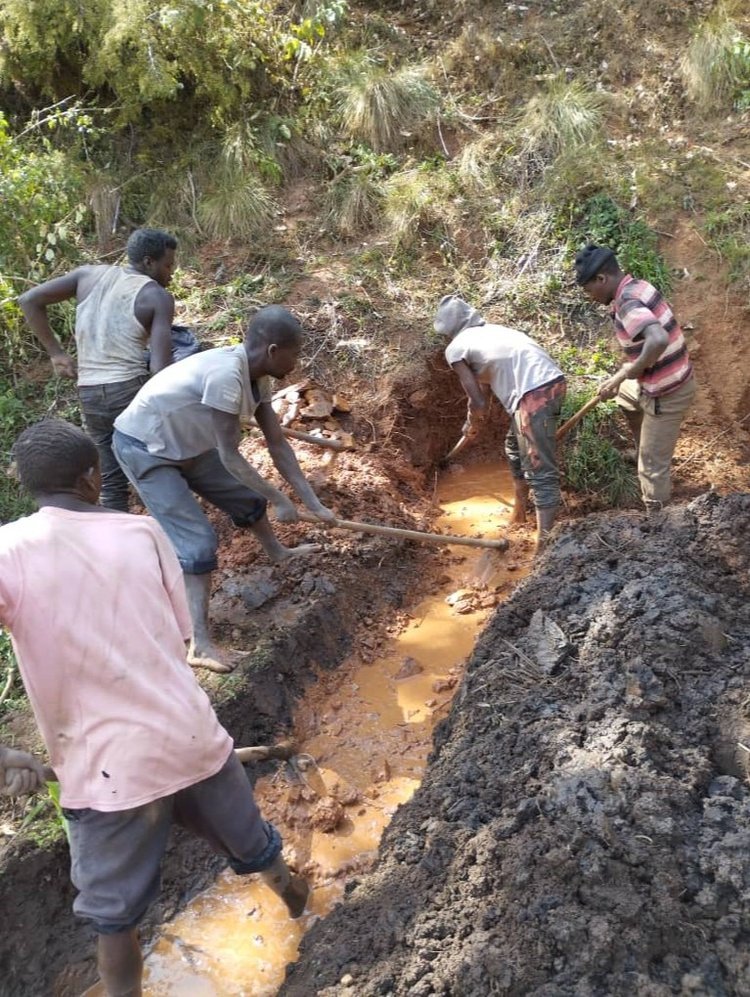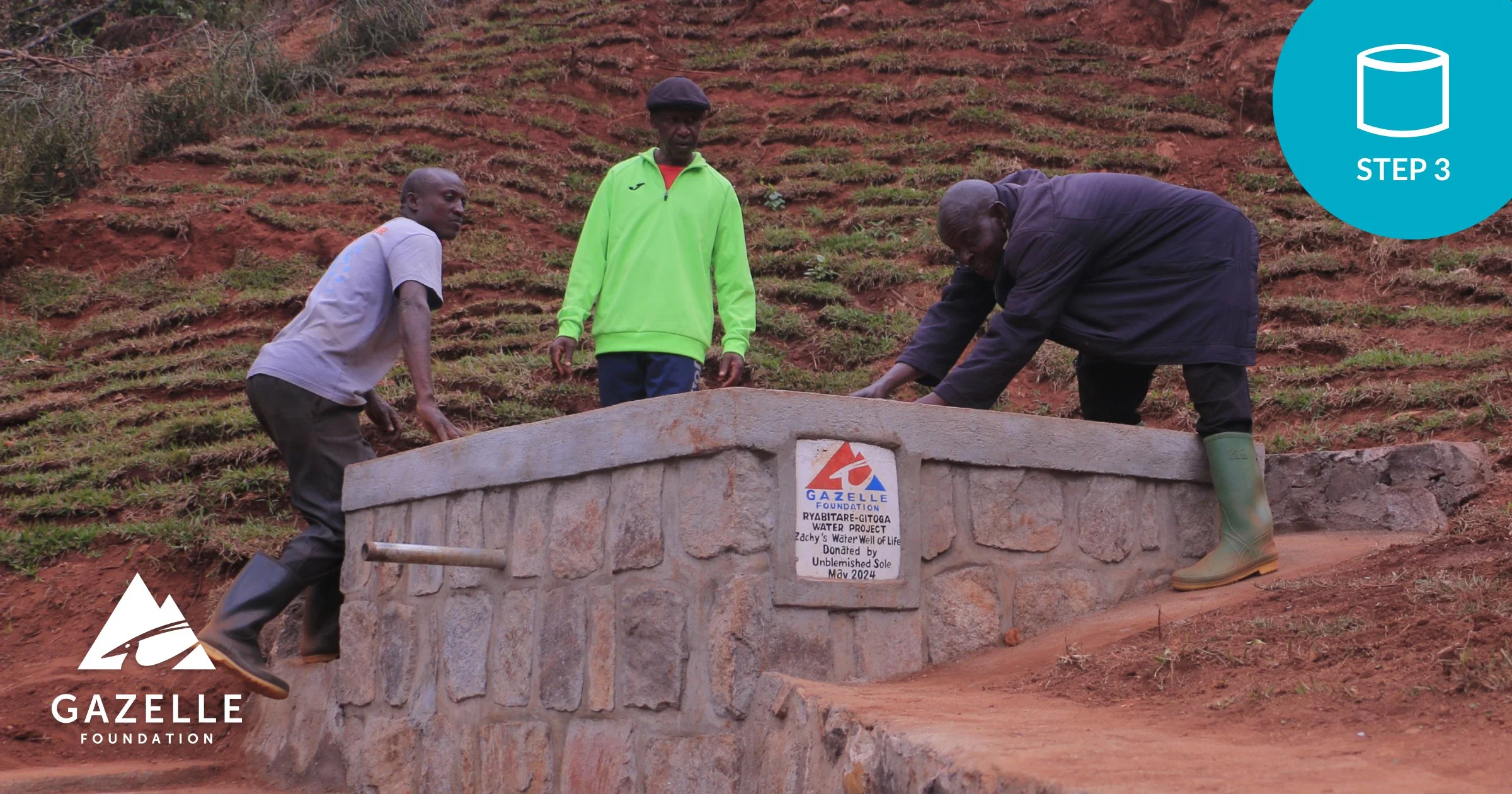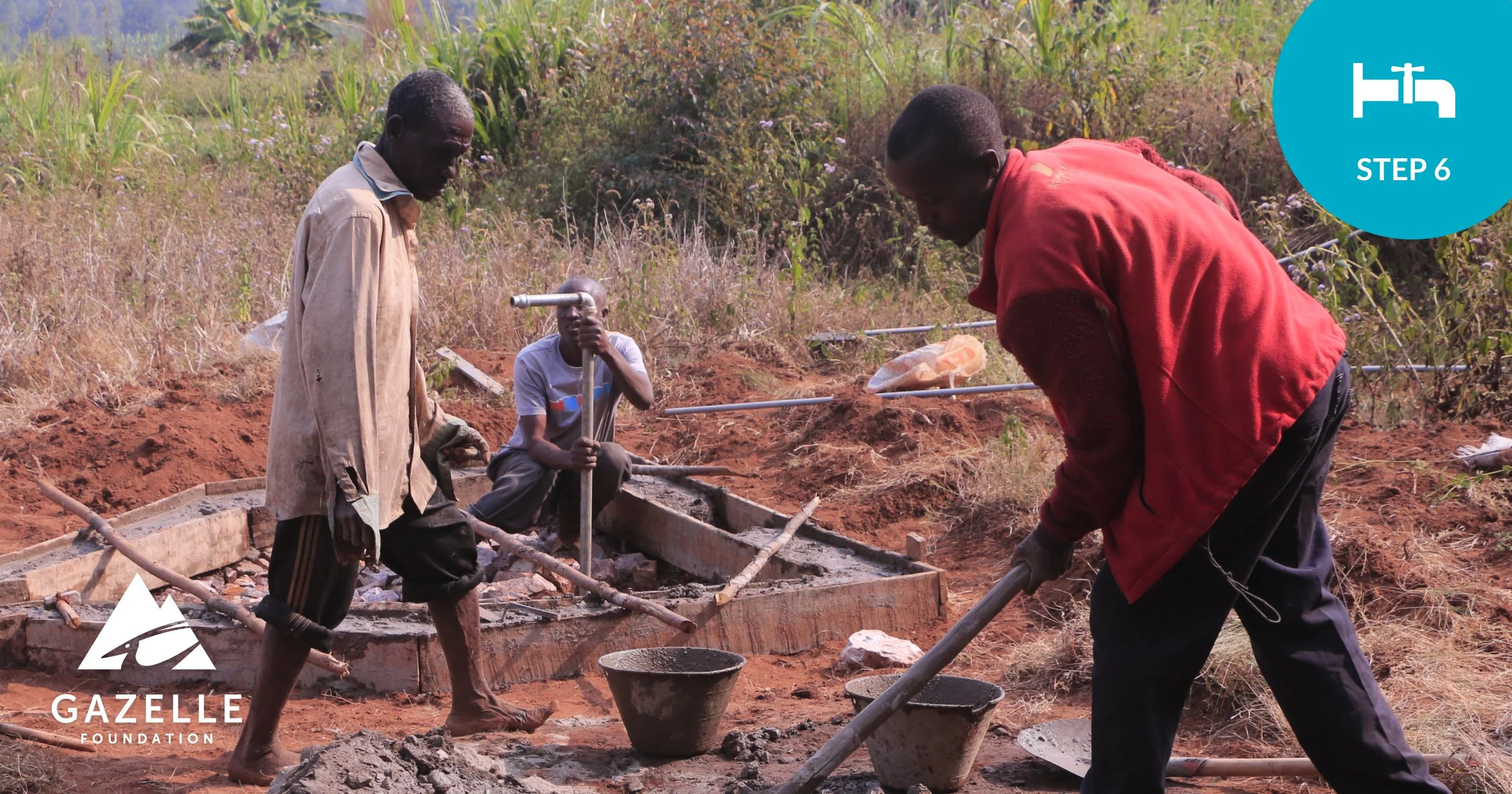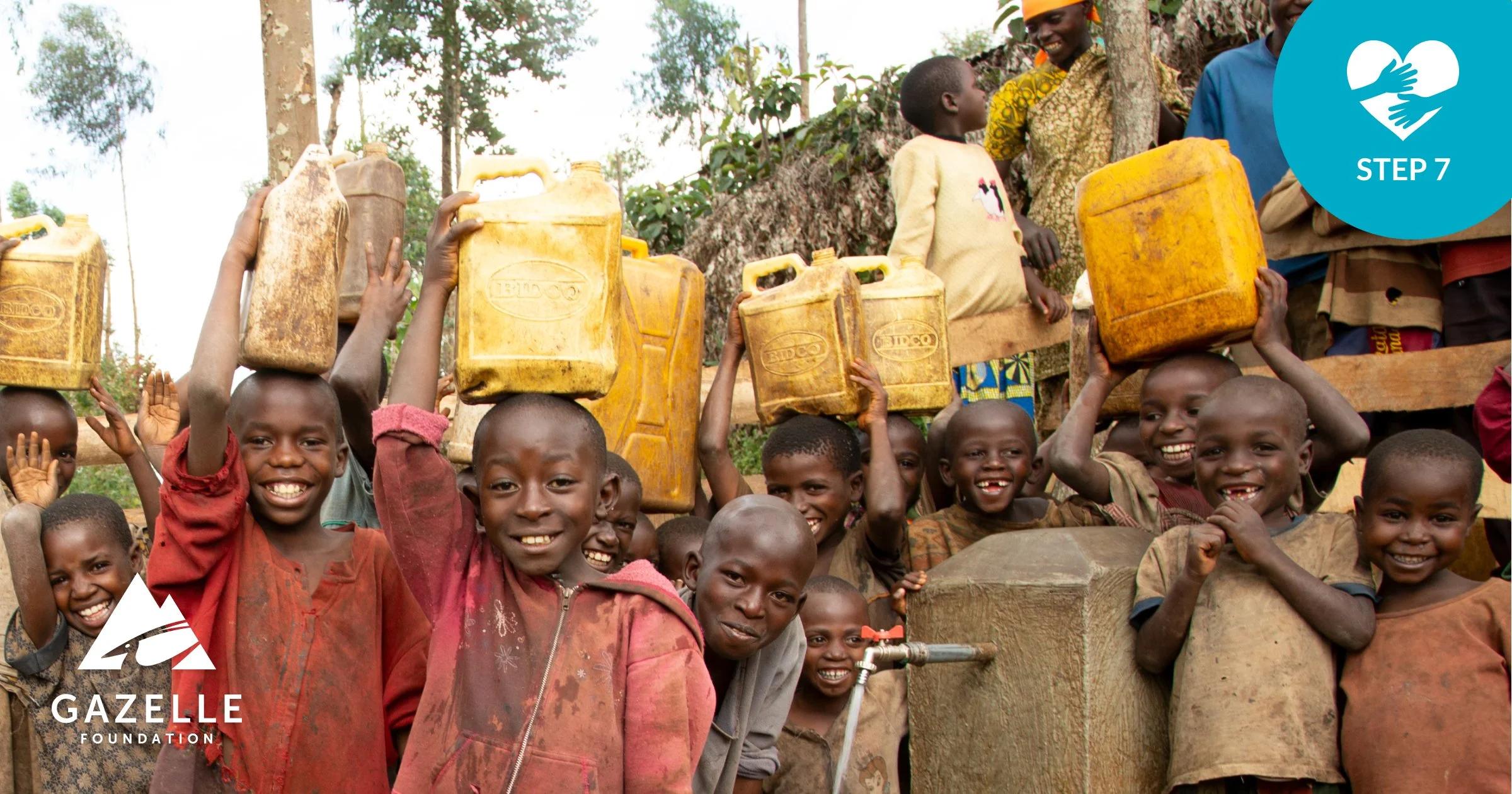In Burundi’s remote, rural locales, sustainable water systems that distribute clean water are rare. Few people have water access inside their homes, much less at schools, markets, and health clinics.
Close access to clean water is simply not a given in rural Burundi, East Africa. There are few paved roads, and much of the country has scarce access to electricity. The remote locations where we work in the Bururi Province can be difficult to reach during the rainy season.
Gazelle Foundation Co-Founder Gilbert Tuhabonye frequently shares that he first tasted clean water in first grade. He remembers waking up each morning, running a few miles to fetch water, then running even more miles to school, before returning home to fetch water again. “I’d sleep like a rock, I was so exhausted,” he said. It’s no wonder he became a world-class runner after all that practice.
Proven Steps to Build Water Systems That Last
Now a philanthropist, author, and coach, Gilbert and his co-founder Peter Rauch along with many supporters in Central Texas and across the world continue their relentless pursuit to bring clean water to Burundian communities.
We believe that everyone deserves access to clean water. Our proven process is used again and again because it works. Our process to build low-tech, high-impact sustainable water systems in Burundi takes seven steps:
Step 1 | Plan and determine water system logistics
Once a specific water system is funded, our team in the United States greenlights the project. We execute a contract between Gazelle Foundation and our project manager in Burundi.
In addition to learning where people dwell, we identify schools, churches, medical clinics, markets and food processing facilities that will benefit. These factors are key to determining where systems get built.
The contract includes schematics, a timeline, an exact budget, and reporting standards. We make payments based on progress, which is why having milestones and a pay schedule, is important. Similar to a renovation, we pay 30% upfront for supplies and labor to get started. The rest is paid out on a schedule as it is completed.
Supplies like rocks, sand, cement, and water pipes are trucked in as close as possible, but many times they have to be transported the rest of the way by hand or wheelbarrow to the site where the water system is under construction.
How the Project is Managed in Burundi
Our longstanding project manager in Burundi, Jean Bosco Ndabaniwe, oversees every aspect of the project from purchasing supplies to the transportation of materials and tools to the job site to hiring workers, construction, testing, and transfer of ownership of the system to the beneficiary community.
How the Project is Managed in the United States
Our team in the United States monitors project milestones, receiving GPS coordinates, budgets, photographs and receipts. You can read about each water system we have built and those that are in progress. Pictures and updates are recorded for each water system and can be accessed on our website.
Jean Bosco Ndabaniwe (left) speaks with a local official at the official handover ceremony for Murenge-Shanga Water System #73.
How We Name Water Systems
Each water system is named for the geographic source of the water and the community where the water is used. The water collection chamber and storage tanks are labeled with the name of the water system. Donors who sponsor water systems or parts of water systems have the opportunity to also have their name on the water collection chamber and storage tanks. Contact us to learn more.
The water storage tank was named by Alvin Chee in honor of his parents Bill and Dorothy Chee
Step 2 | Identify a source of clean water
Water is plentiful in Burundi but surface water is easily contaminated. Our spring water collection system makes it possible to capture and filter clean water for drinking and daily use.
The low-tech, gravity-fed water systems we build work well with Burundi’s hilly topography. The first step involves excavating and protecting a clean water source.
Step 3 | Build a water collection chamber
After supplies are purchased locally and delivered, local residents are hired to construct the water system. Most have agricultural experience. Building a water system gives them experience in a trade (i.e. plumbing, masonry) they can use for the future. Hiring locally keeps knowledge and expertise close to the water system from the beginning.
Construction starts with building the water collection chamber. This chamber is constructed with bricks and concrete. It becomes the permanent water reservoir and heart of the water system. One or multiple springs may feed a water system to engineer enough water flow (liters per second) that will provide enough water all year, through wet and dry seasons.
The water collection chamber filters water before it is distributed to storage tanks and tap stands located throughout the communities it will serve.
Step 4 | Dig water distribution pipes
Miles or kilometers of water distribution pipe are hand-dug near agricultural fields, pathways, and across tropical terrain. They connect to water tap stands that will serve villages, schools, churches, health clinics, and food processing facilities.
Since 2006, we have dug hundreds of miles of water distribution pipe.
Step 5 | Construct storage tanks
Water storage tanks of various sizes are constructed to ensure that enough water is available for the community in every season.
Step 6 | Build water taps
Water tap stands are strategically placed to reduce the average walk from 4 miles to a quarter mile. This distance equates to roughly a 400-meter lap around a running track.
Concrete forms and distribution pipes are added before the concrete is mixed and poured. After tap stands are added, many times we add a fence to protect the tap stand.
Communities agree that water is available at no charge to anyone in need regardless of tribal affiliation, religion, or background.
Step 7 | Celebrate & Transfer Ownership to the Partnering Village
After the water system is complete and tested, the community participates in a formal ceremony to celebrate the transfer of ownership to the village. Local dignitaries attend, and the day is full of music and joyous dancing.
Village elders tell us that those who worked on the systems use their knowledge to maintain their water systems. This local know-how means every village has the expertise to maintain its water system indefinitely.
A long-term partner in the region, the Gazelle Foundation’s co-founder Gilbert Tuhabonye has family ties nearby and regularly visits villages that have benefited from these sustainable, gravity-fed water systems. Since our founding in 2006, all the water systems we have constructed in partnership with Burundian communities remain 100% operational.
The Impact of Clean Water
Our proven process has resulted in 73 water systems so far serving more than 138,000 individuals. Our unique structure and on-the-ground partnerships help maintain lower-than-average costs to build effective, sustainable water systems. Read more about our impact.
Since 2006, the Gazelle Foundation has been partnering with Burundian communities to spread hope and peace via bringing close access to clean water. Burundians tell us how clean water has affected their day to day lives.
Close access to clean water means boys and girls are able to attend school, everyone’s health improves, and more time exists for adults to pursue their dreams.
“Regarding this recent work that the Gazelle Foundation has done for us here to bring this water. First of all we thank God for giving us these people. And we also thank them for the way they allow us to bring clean water closer to the citizens. To give an example here in Shanga. For years they have not had clean water. Here, many people draw from wells. The citizens used to draw water of very poor quality, but now they are happy to be able to drink clean water and their health is improving,” said a Matana Commune Administrator. See what beneficiaries of our water system have told us.
Get Involved
Sign up to receive news from us and learn how to get involved. If you wish, join our monthly sustaining donor community, AMAZI for Burundi (Water for Burundi), with a tax-deductible gift in any amount.
““Despite all it’s faults and legacy of violence, I so very much love my country and my culture.” ”
Gilbert Tuhabonye celebrates the new water system and the people it serves on a recent trip back to Burundi.


